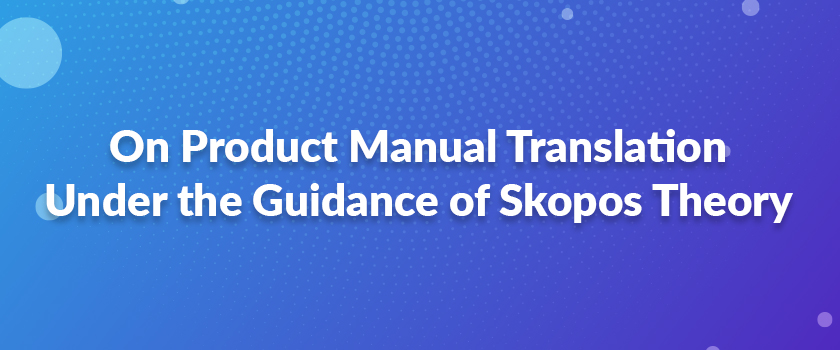As a special kind of “advertisement”, product manuals are a “bridge” between consumers and companies. The quality of translations of product manuals is very important to the marketing of products. But at present some versions are poorly done. Skopos theory of German school, a relatively new model in translation studies, puts special stress on participating purpose, regarding translation as a purposeful action and insisting that the purpose decides the process.
It can instruct the translation of product manuals. Therefore, in the translation process of product manuals, three rules proposed in skopos theory should be followed: shopos rule, coherence rule and fedelity rule. Under the guidance of the theory, some methods—literal translation and free translation, can be adopted to inject new vitality for product manual translation and offer more convenience to people.
In the modern society, inter-cultural communication plays an important role in people’s daily life. Since the implementation of opening-up policy, especially with China’s entering into the WTO, our country communicates with foreign countries more frequently.
The number of domestic products obviously cannot meet the increasing demands of Chinese consumers who are eager to know more about the foreign products for their high quality.Thus a large number of foreign products sweep into China to meet the increasing demands of people’s material and spiritual lives. As we know, every product contains its manual about its quality, nature, maintenance, and usage.
Well-written manuals and accurate translation not only provide relevant information about products but also help producers set good public image and credit standing. Otherwise, poorly-written manuals and improper translation definitely discourage consumers’ confidence, and even endanger their lives.
Though the translation of manuals plays an indispensable role in international marketing, the translated versions of some manuals are not desirable. Thus, this problem should be and must be paid more and more attention to.
The author, taking product manuals collected in China as its data, and the skopos theory as its theoretical framework, tentatively analyzes the features and functions of product manuals and puts forward some effective translation methods—literal translation and free translation. It aims to inject new vitality for product manual translation and offer more convenience to people.
Read Also: Which leadership style is the most effective in business management?
- 1. An Introduction of Skopos Theory
Skopos theory plays an essential role in the functional school of translation studies. It frees translation from the limitation of the source text, and offers guidance to the translation of pragmatic texts, such as product manuals the research subject of this paper. According to skopos theory, in the process of translation, three principles should be abided by: skopos rule, coherence rule and fidelity rule. The following text will give a brief introduction to skopos theory and its three rules.
1.2 Rules of Skopos Theory
Skopos theory lays down the foundation for the functionalist translation theory of which Skopos Theory is the core part, thus ananalysis surely becomes quite necessary. There are three essential rules for skopos theory: skopos rule, coherence rule and fidelity rule.
1.2.1 Skopos Rule
The top-ranking rule for any translation is skopos rule, which indicates that a translational action is determined by its skopos. Skopos rule refers to translating in a way that enables the translation to function in the situation in which it is used and with the people who want to use it and precisely in the way they want it to function.
There exist three possible kinds of purpose in the field of translation:the general purpose aimed at by the translator in the translation process; the communicative purpose aimed at by the target text in the target situation and the strategic purpose aimed at by using a particular translation method or procedure. Nevertheless,the term skopos usually refers to the purpose of the target text. Vermeer explains the rule as follows:
“Each text is produced for a given purpose and should serve this purpose. The Skopos rule thus read as follows: translate/interpret/speak/write in a way that enables your text/translation to function in the situation in which it is used and with the people who want to use it and precisely in the way they want it to function” (Nord, 2001: 29).









